How to Layer Clothes for Cold Weather So You Always Look Stylish
The best tips to get you through fall and winter.
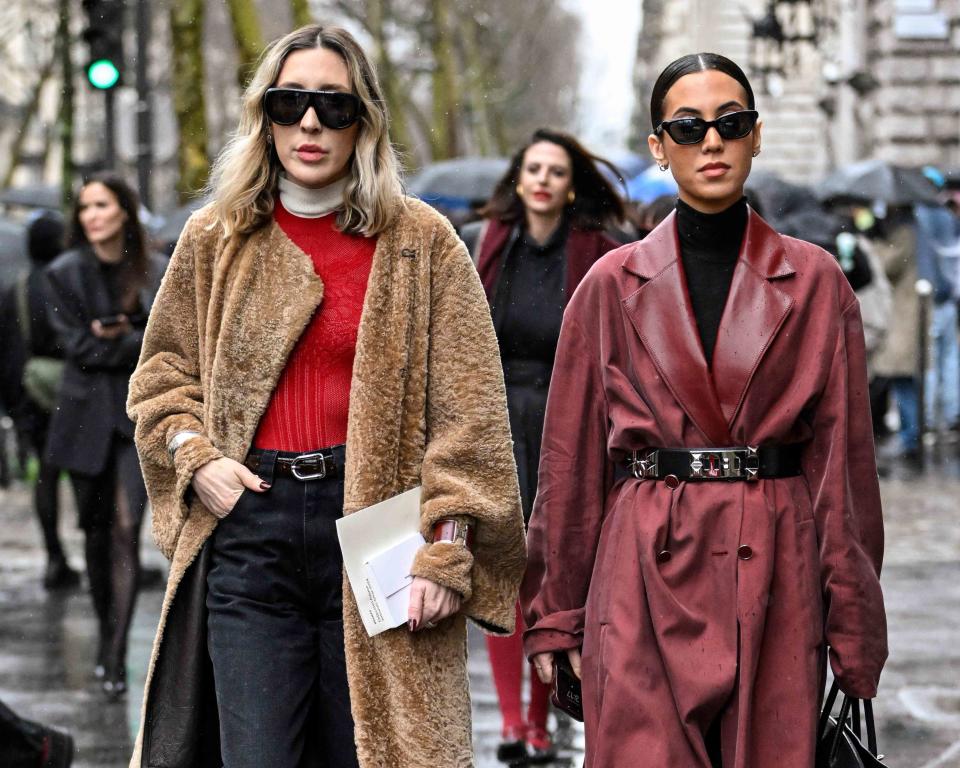
Getty Images
I’m going to let you in on a little fashion editor secret: the single most important rule of layering is not in each individual piece, it’s in the way they fit together as a whole, cohesive look. But putting that together isn’t as easy as it sounds. It takes a delicate balance of fabrics, colors, and prints to create a stylish outfit that will actually keep you cozy.
“Layers can add dimension, texture, and warmth, and the right materials combined together can effortlessly add to your style,” says Lindsey Bernay, on-air fashion expert and author of You Can't Leave the House Naked. “To avoid a disjointed look, pair textures and patterns that compliment each other.”
To avoid the yearly layering torture, we asked experts what are the best ways to accomplish a cozy, warm, and stylish outfit. Ahead, Bernay and more fashion stylists share their top tips for fall and winter styling.
Know Your Layers
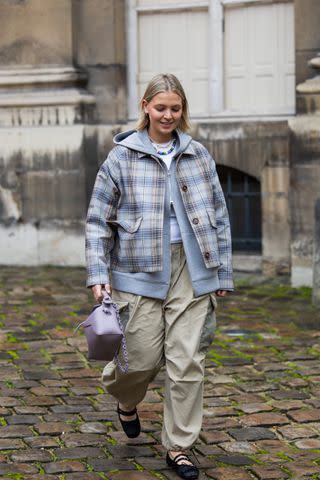
Christian Vierig/Getty Images
There are three basic tiers of layers: start with a base layer (T-shirts, bodysuits, and undergarments), then add a middle (sweaters, flannels, jeans, etc.), and finish with a top layer (outerwear and accessories).
Generally, these layers act as the blank canvas for your look. They’re often made of lightweight, breathable materials that are comfortable and functional. Joiee Thorpe, an editorial and celebrity stylist who’s worked with brands like Marc Jacobs, Fendi, Versace, and Christian Louboutin, recommends utilizing “bodysuits, camisoles, cotton tees, crop tops, and cute bra tops.” When it comes to brands, Bernay recommends SKIMS, Aritzia, Forever 21, and Wolford.
Once you’ve got a solid base layer in place, it’s time to let your personal style shine. “Middle layers are the core pieces for your look,” Thorpe says. “Blazers, hoodies, dresses, jumpsuits, skirts, trousers, and denim are key middle layers.” Think of these pieces as the insulation of your look. Plush textiles—particularly natural ones, like wool, cashmere, and fleece—work best to trap your body heat, to keep you warm. These materials can get bulky, so look for cropped options to avoid any uncomfortable tucking.
The top layers are, indeed, the cherry on top of your look (which makes your base layer ice cream and the middle, a warm chocolate fudge). They add a final touch and, in the case of layering clothes for cold weather, an added layer of utility. Jackets and coats are the most common examples, but vests, capes, and scarves also fall into the category. Here, you can pile on the thickest of materials—like faux fur, chunky knits, and vintage leather—to hit right in the sweet spot of style and comfort.
How to Style Layers
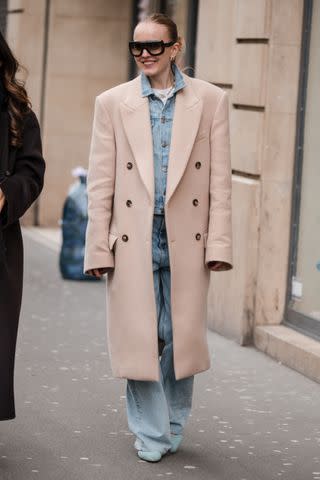
Claudio Lavenia/Getty Images
Though functionality is a necessary aspect of winter layering, style does play an important role (the most important one, in my opinion). When styling her clients, Thorpe likes to use contrasting aesthetics for the perfect blend of edgy and sweet. “I love to layer oversized blazers and jackets with feminine styles,” Thorpe says.
Bernay, on the other hand, recommends going for an unexpected combo—like lingerie and workwear—to add excitement to your outfit. “Corsets can be worn over a button-up shirt for a fresh take on a classic look,” she tells InStyle. Another great hack? Try wearing your favorite cropped jacket as a shirt for added warmth and an extra dose of style. Denim jackets, particularly, make for a great middle layer.
The Best Colors for Layering
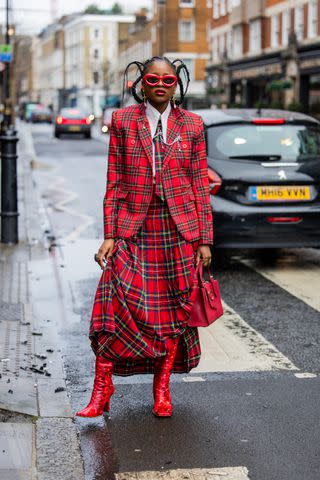
Christian Vierig/Getty Images
Before we get into color-blocking, let’s make a quick pit stop at monochromatic outfits. Though overwhelming color might seem intimidating, it’s surprisingly easy to pull off. It’s nearly impossible to fail a monochromatic look—so long as you mix tones, prints, and textures. “The key to layering colors is staying within the same color family. By blending shades of the same tone, you can create a chic, harmonious look,” said Bernay.
From there, the next step up the layering ladder is color-blocking. The opportunities are virtually endless, but there are a few particularly trendy combinations. Primary colors, like red, blue, yellow, and grass green are great for layering. Likewise, secondary colors, such as pink, turquoise, purple, and orange are easy to style together.
Varying colors are also easy to mix if they’re of the same tone (keep vibrant colors, jewel tones, muted neutrals, and pastels with colors from the same family). And when in doubt, black and white is always a fail-safe option.
That said, Bernay advises: “Steer clear of themed color pairings to avoid specific connotations. Red and green paired together is most often associated with Christmas, and orange with black can remind people of Halloween.”
If you’re looking to level up your layering capabilities even further, prints are always an option. But be warned, print mixing is the Olympics of dressing, and only the most elite (read: experienced) can stick the landing. Naturally, Bernay is one of those people. “To keep prints from competing with each other, maintain a cohesive color palette. Choose prints with similar tones to tie the look together.”
Size is particularly important when it comes to print styling, Bernay adds. “Create a balanced scale by mixing a large print with a smaller one for a visually appealing combination.”
Materials to Consider
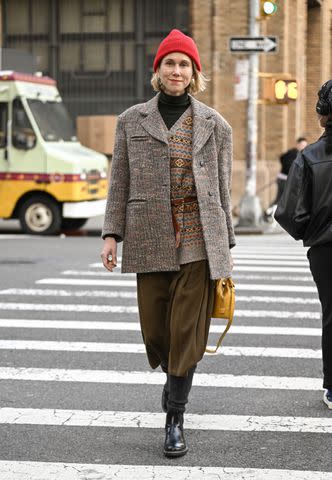
Daniel Zuchnik/Getty Images
Even the most over-the-top maximalist still approaches print mixing with caution, and the same goes for layering texture. Add too much and your look feels busy and random, but go without and you risk the look falling flat.
“Be mindful about textures,” warns Bernay. “Combining too many different fabrics can look jarring.” For example, she says pairing velvet with ribbed fabric and tweed can be overwhelming. But if you pare it back to just velvet and tweet, then the outfit works better. “Stick to complementary textures,” she says.
Thorpe says there are several fail-safe combos that always look great. She recommends wearing a “wool blazer, silk blouse, and leather bottoms” to strike the perfect balance.”
Bernay, on the other hand, says she favors layering denim (particularly, dark-washed denim) with tweed. “The rugged denim balances the structure of tweed,” she says. “Some of my favorite print and texture pairings include pinstripes with silk or tweed; sequins with cashmere; velvet with leather; leopard with silks. The combination of leather and denim is another favorite.”
For more InStyle news, make sure to sign up for our newsletter!
Read the original article on InStyle.


